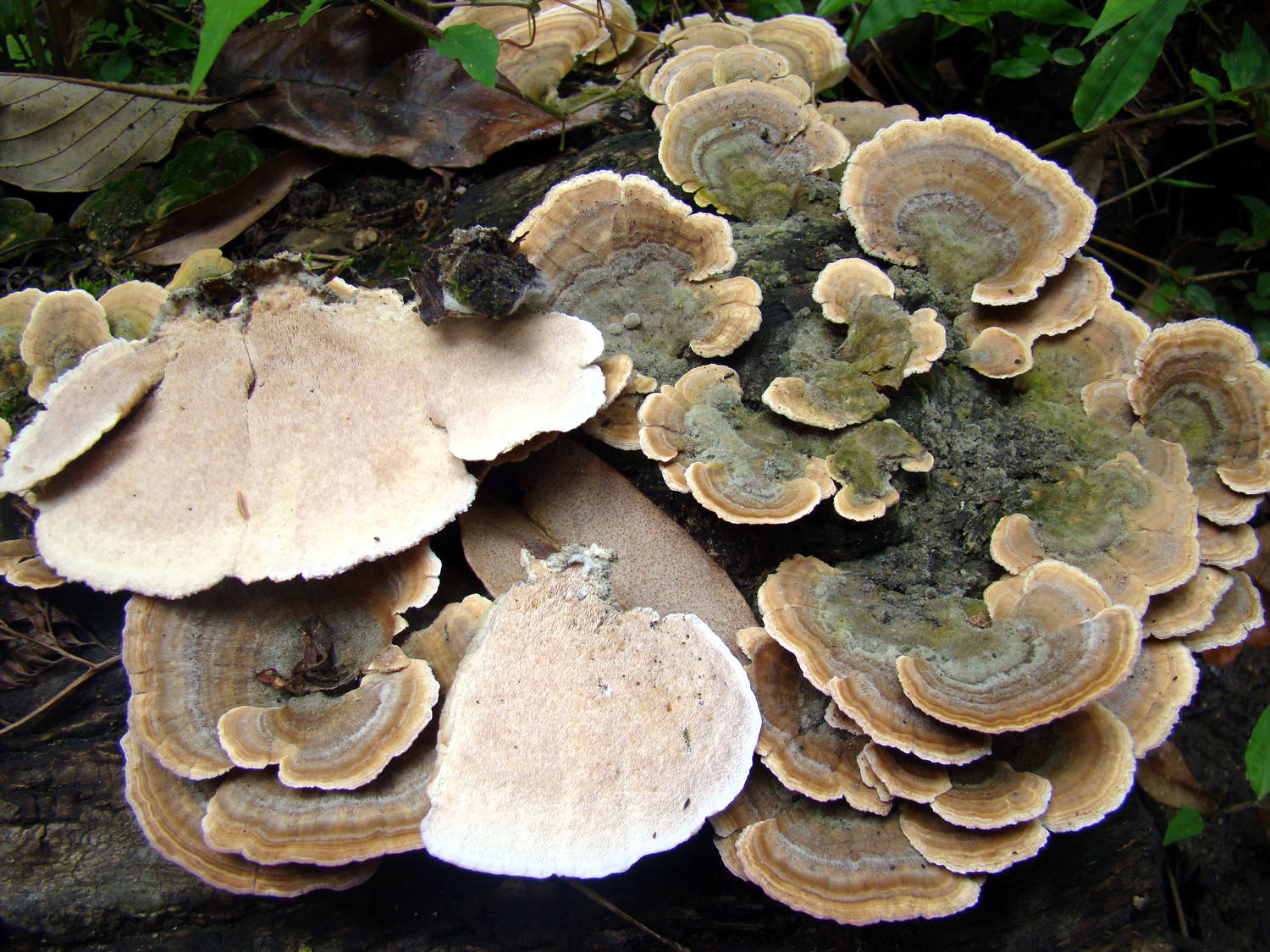
Local name: No local name known
Edibility: Harmless but very tough for culinary.
Habitat: Gregarious and lignicolous.
Description: Fruiting bodies: 3-5 cm (up to 10 cm when fused together), lateral, attached to the decayed woods and it has no stem. Upper surface: Concentric lines, pubescent surface, brownish with purplish towards the margin but green towards the base due to the presence of algae and wavy margin. Under surface: Yellowish-purplish with elongated pores (0.5-2 mm long pores) the pores are longer at the base than at the margin, 1-2 pores/mm. Flesh: Tough leathery and greyish coloured. Spore Print: Greyish white.
Comments: The white, hairy and zonate cap, usually with a purplish margin when young and purple-tinged pores make it easy to recognize although in age the pores may break down to form spines causing possible confusion with species of tooth fungi. Look-alikes include Schizophyllum commune, also with a whitish, hairy cap but distinguished by a "split gill" and Fomitopsis cajanderi an uncommon but larger woody polypore that has a blackish-brown cap and pinkish pore surface.


